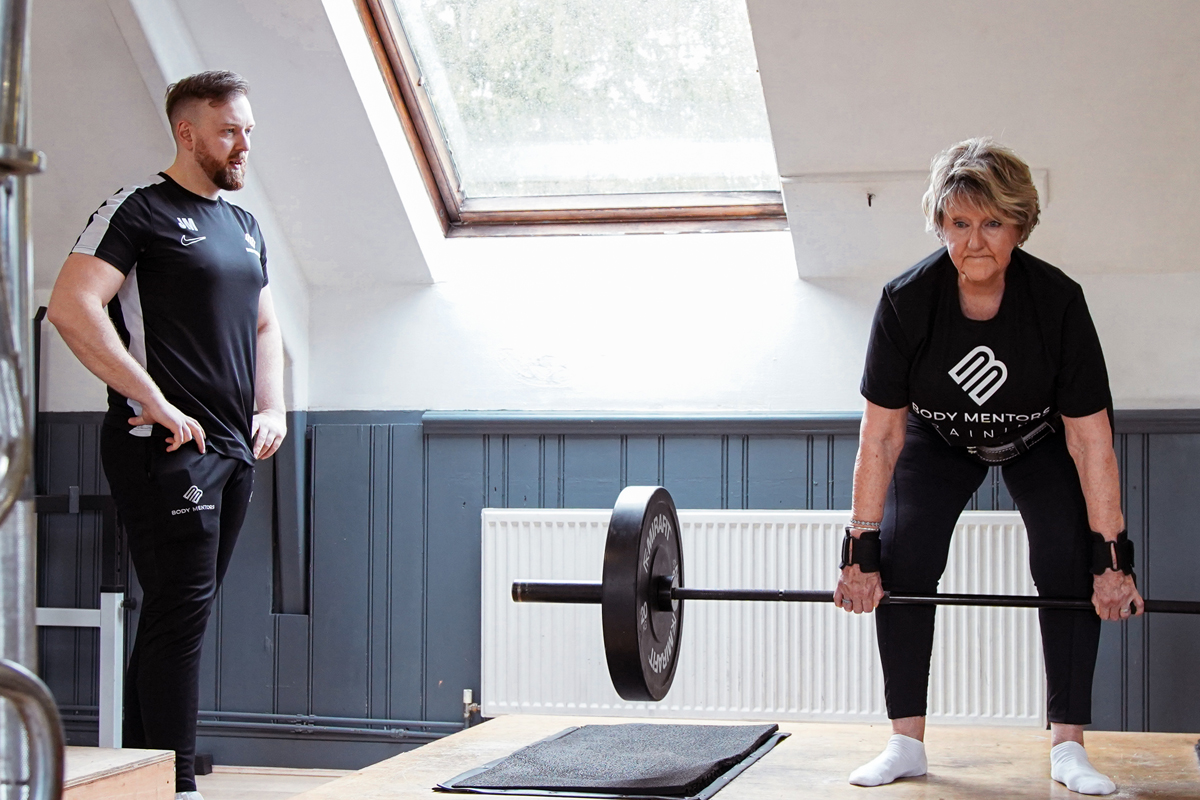
Lifting weights makes you bulky
This is something we often hear from women. It’s based on an unfounded fear that moving away from a low weight/high rep routine to lifting heavy could lead them to become “too muscular”. Ask any woman who has achieved a muscular physique, and they will tell you that it doesn’t happen by accident – it takes years of dedicated training, a significant calorie surplus, and supplementation with things like creatine.
Lifting heavy will help you to lose weight, build muscle and increase your confidence. Strength training can even help to future-proof your body by maintaining bone mass, and reduce the risk of developing osteoporosis later in life.
Strength training is only for young people
This is another myth that is incredibly damaging, as it risks excluding those who could benefit the most from strength training. Strength training can benefit people of all ages.
Muscle mass and strength naturally increase steadily until the age of 30-35 years, after which this starts to slowly decline. This decline accelerates around the age of 65 for women and 70 for men. Strength training is one of the best ways to slow this process and maintain muscle mass – ageing is, of course, inevitable, but we’re big believers that frailty is not.
Lifting weights is dangerous and causes injuries
It’s certainly possible to injure yourself with poor form or lifting heavier than you’re ready for; but that’s why we recommend learning the basics of compound lifts with the support of a qualified personal trainer.
By working one-on-one with a coach, you can learn the correct technique, as well as the subtle cues from your body, so you know when it’s time to push yourself and when it’s time to ease back. With proper form and a solid appreciation of the principles of progressive overload, you can achieve incredible progress without running the risk of injury.
Strength training can lead to reduced flexibility
This fear is likely to be rooted in experiencing DOMS (delayed onset muscle soreness) after strength training, or a perception that bodybuilders with high muscle mass have reduced mobility.
DOMS is something that most newcomers to strength training will have to deal with, but it can be eased through a proper post-workout routine. And once you reach your stride in the gym and start to go regularly, this will no longer be a problem.
For those concerned about building so much muscle that you lose flexibility, this is not something that can happen accidentally – in fact, it requires many years of training, a strict diet, supplements and unwavering dedication. For most people, compound lifts can improve flexibility and mobility by practising full ranges of motion in natural movement patterns.
Strength training is dangerous for children
Injury rates for supervised weightlifting (0.001 to 0.003 injuries per 1,000 hours of training in supervised, well structured programs for adolescents) are far lower than contact sports such as football (6-7 injuries per 1,000 hours).
We should also mention the myth that lifting weights can stunt growth in children is nothing more than an old wives tale, and there is no scientific evidence to support this claim. With the correct guidance and coaching, strength training is incredibly safe for young people, and can be hugely beneficial.
You can build strength without lifting heavy
Magazines and websites often promote the myth of “toning” muscles with low weight and high rep routines. While it’s a lovely idea that you could simply repeat the same exercises at the same weight over and over to achieve a stunning physique, unfortunately it doesn’t quite work this way.
To achieve that enviable “toned” physique, you need to challenge the muscle, as this is the only way to stimulate muscle growth. In gym terms, this is known as hypertrophy, and progressive overload is the most efficient way to achieve this. Paired with fat loss, you can achieve incredible transformations, but not without putting in the work and lifting heavy weights.

